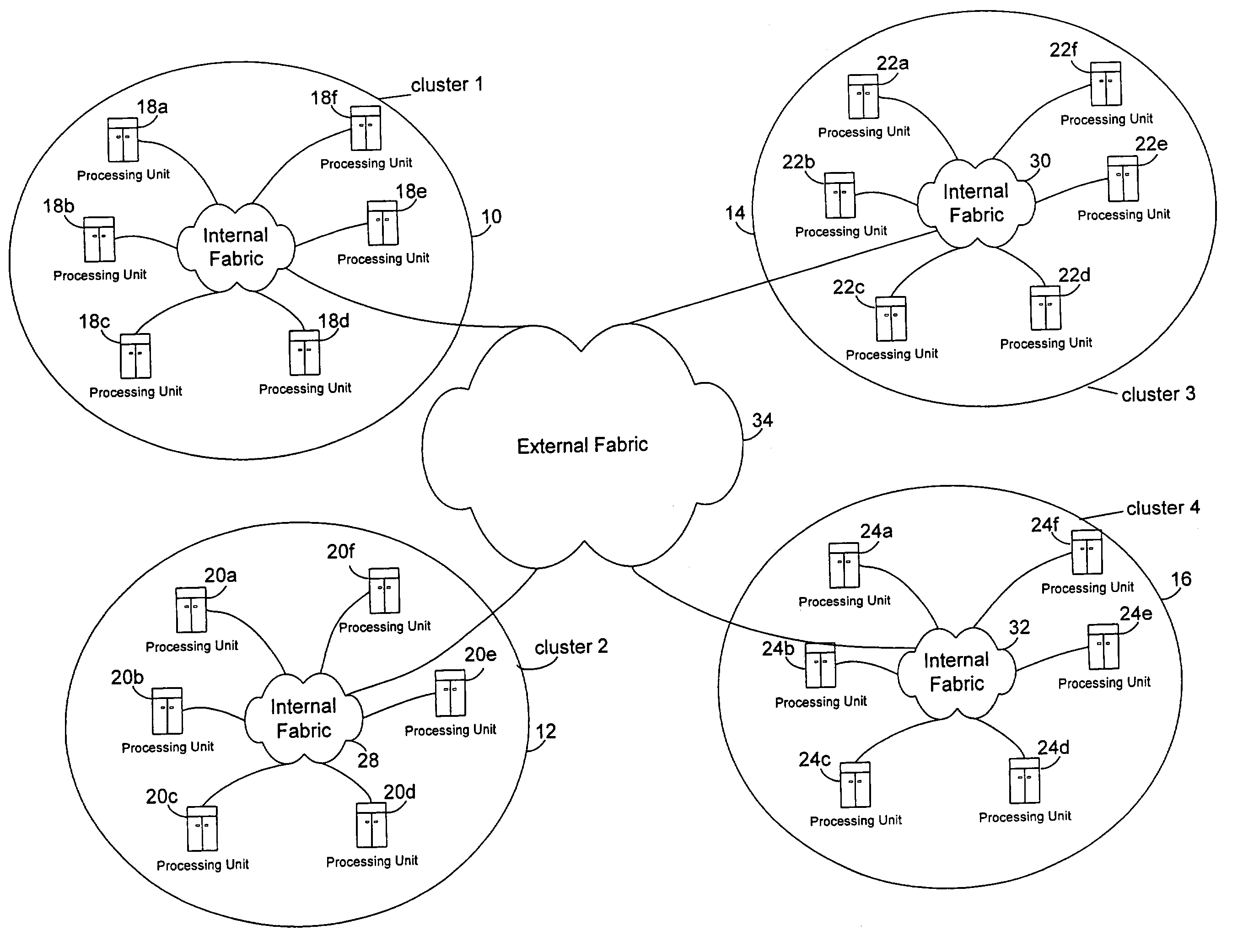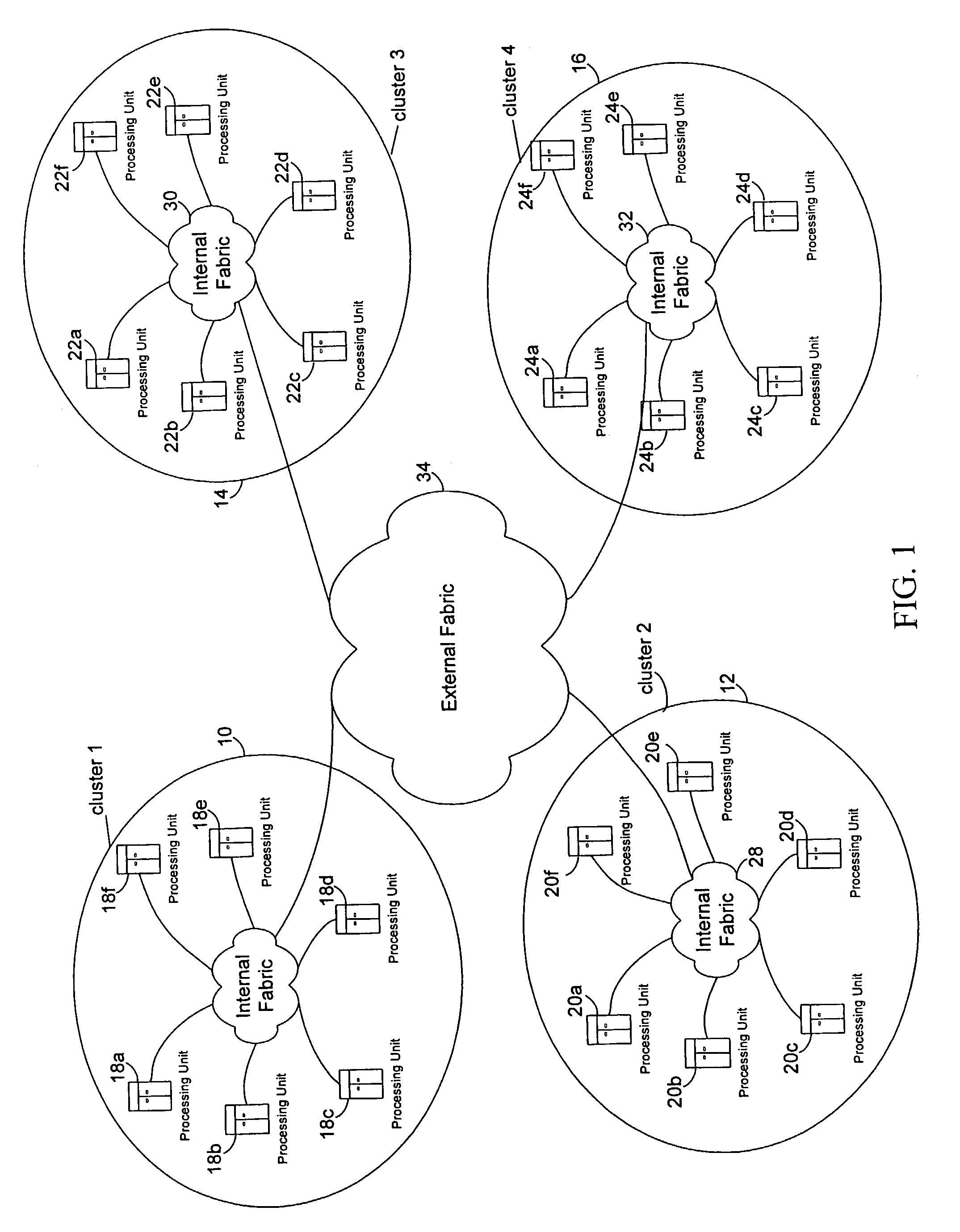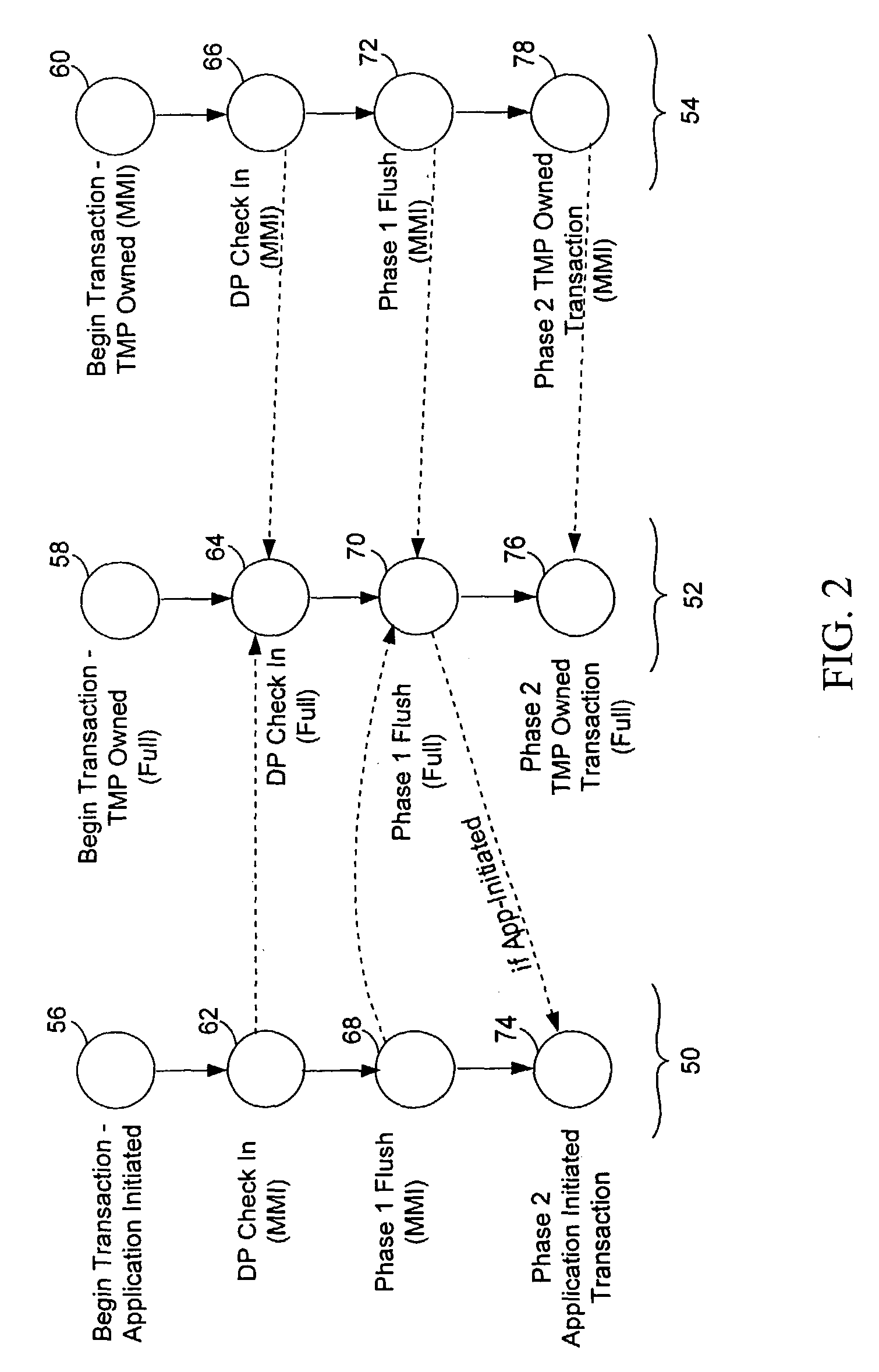Hybrid method for flushing transaction state in a fault-tolerant clustered database
a transaction state and cluster database technology, applied in data processing applications, fault response, instruments, etc., can solve the problems of ineffective aggregatement of messages between cpus, excessive load of cluster interconnection, and performance problems with respect to the protocols used by the entire transaction processing system, so as to improve the performance of the transaction system, the number of clusters that participate in a distributed transaction can be doubled without a significant effect on performance, and the efficiency of network messages between clusters
- Summary
- Abstract
- Description
- Claims
- Application Information
AI Technical Summary
Benefits of technology
Problems solved by technology
Method used
Image
Examples
Embodiment Construction
[0027]FIG. 1 shows a system setting in which the present invention operates. The system includes one or more clusters 10, 12, 14, 16 of CPUs 18a–f, 20a–f, 22a–f, 24a–f, interconnected by an internal fabric 26, 28, 30, 32. In some embodiments, up to 16 CPUs (CPUs and volatile storage, such as semiconductor memory) are interconnected locally by the internal fabric. Each CPU 18a–f, 20a–f, 22a–f, 24a–f has access to a stable storage system, such as a disk system (no shown), which survives a failure in one of the CPUs. An external fabric 34 interconnects the clusters 10, 12, 14, 16. The external fabric 34 can be a local-area network or a wide-area network.
[0028]FIG. 2 sets forth the various phases of the transaction protocols involved in the present invention and their inter-relationships. These transaction phases are the phases involved in the life of a transaction within a cluster and may be part of a two-phase commit protocol that operates among two or more clusters.
[0029]A transactio...
PUM
 Login to View More
Login to View More Abstract
Description
Claims
Application Information
 Login to View More
Login to View More - R&D
- Intellectual Property
- Life Sciences
- Materials
- Tech Scout
- Unparalleled Data Quality
- Higher Quality Content
- 60% Fewer Hallucinations
Browse by: Latest US Patents, China's latest patents, Technical Efficacy Thesaurus, Application Domain, Technology Topic, Popular Technical Reports.
© 2025 PatSnap. All rights reserved.Legal|Privacy policy|Modern Slavery Act Transparency Statement|Sitemap|About US| Contact US: help@patsnap.com



